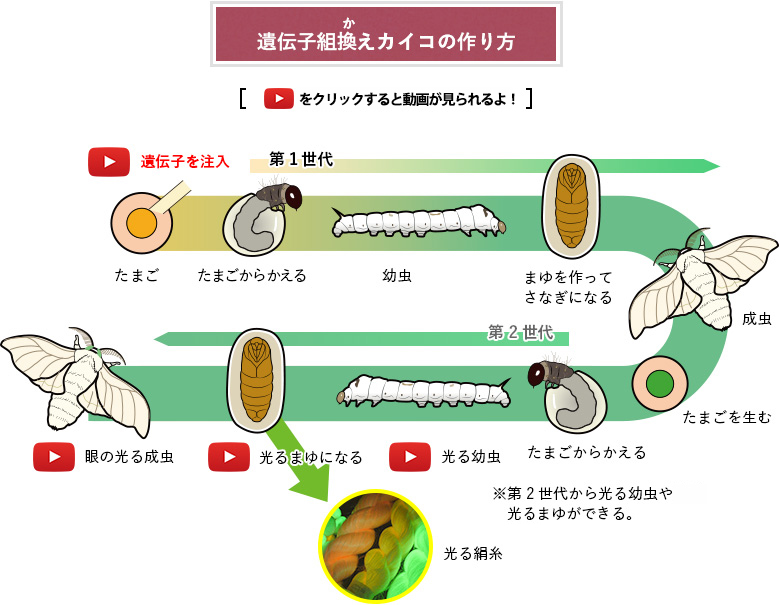We are continuing to growth the medium and growh some microorganisms with using our mediums. Also, we start the research about DNA modification.
This week assignment from Georg are…
- Choose 3 genetically modified organisms
- Describe the traits
- Find out the modification methods
- Extra credit: find gene/gene sequence that has been changed
1. Transgenic rice containing peptides from Japanese cedar pollen allergens (スギ花粉緩和米).
Traits
Transgenic rice containing peptides from Japanese cedar pollen allergens is rice produced using GMO for the purpose of alleviating Japanese cedar pollen allergens (スギ花粉) by feeding. It starts to research and development from 1996. By Gerne Modefication, the antigen protein has been accumulated in seeds, and it is expected that oral ingestion will induce desensitization and alleviate cedar polle allergens.
In 2005, the allergic symptoms to cedar polle allergens are reported in mice, and reearch and development are underway for application to human being.

Modification Method
Two types of proteins, Cry j1 and Cry j2, are known as Japanese ceder pollen allergens. These allergens were modified to have the T-Cell epitopes required to suppress immune reactivity, while being unrecognized by IgE antibodies to avoid anaphylactic shock. The epitope is a combination of about 10 to 20 amino acids. This Genetic Modificated Rice grow this epitope in themselves.
2. Generic Modificated Blue Rose
Traits
Since roses do not have a blue pigment, it was considered “impossible” to make roses with blue flower. This is the first achievement of generic modification related to color of flower by Suntory Global Innovation Center Co.

Cited from: https://www.suntory.co.jp/sic/research/s_bluerose/secret/
Modification Methods
What kind of pigment a plant synthesizes is naturally determined by what kind of gene the plant has. Roses do not synthesize blue pigments because they do not have the genes needed to synthesize blue pigments (blue genes, academically, flavonoids 3’, 5’-hydroxylase genes). Therefore, even after repeated mating, the blue roses could not be produced because the roses did not have the blue gene (they do not exist in the strawberry or apple of the Rosaceae family), and the blue pigment could not be synthesized.
Biotechnology allows you to leverage the genes of other organisms to change the nature of the organism of interest. By making the blue gene extracted from the blue flower work well in the rose, we were able to make a rose that accumulates blue pigment. By making various efforts, we were able to increase the content of blue pigment and obtain roses with blue flowers.
3. Transgeric Silkworm
(The explanation is based on the translation of Japanese Wikipedia Page about Transgeric Silkworm)
Traits
Silkworm has various advantages in genetic modification. Sericulture has a long history of about 5,000 years, and breeding, breeding techniques, and domestication have been established. Aseptic breeding is possible throughout the year. Both larvae and adults have mild properties and can be bred in large quantities at a high density of about 1,000 heads / m2. The fact that breeding is possible at room temperature suppresses soaring investment in breeding equipment. Food is cheap, about 2 yen (mulberry) to 20 yen (artificial feed) per head. There is also an accumulation of knowledge as an experimental insect in genetics and physiology research. The genome sequence was decoded in 2009. It is indispensable for culturing fungi such as Escherichia coli and yeast, and has the advantage that it can be grown without a clean room that requires maintenance costs and the yield of products is high.
Methods
The first Generic Modificated Silk Worm is appeared in 2000 by microinjecting foreign genes into eggs using gene recombination technology. In 2008, he succeeded in making shiny silk with the green fluorescent protein (GFP) of Aequorea victoria.

Cited From:https://www.life-bio.or.jp/school/kaiko/q10/a.html

Cite From: https://www.epochal.or.jp/science_casting/sc_2017/theme/06.html
